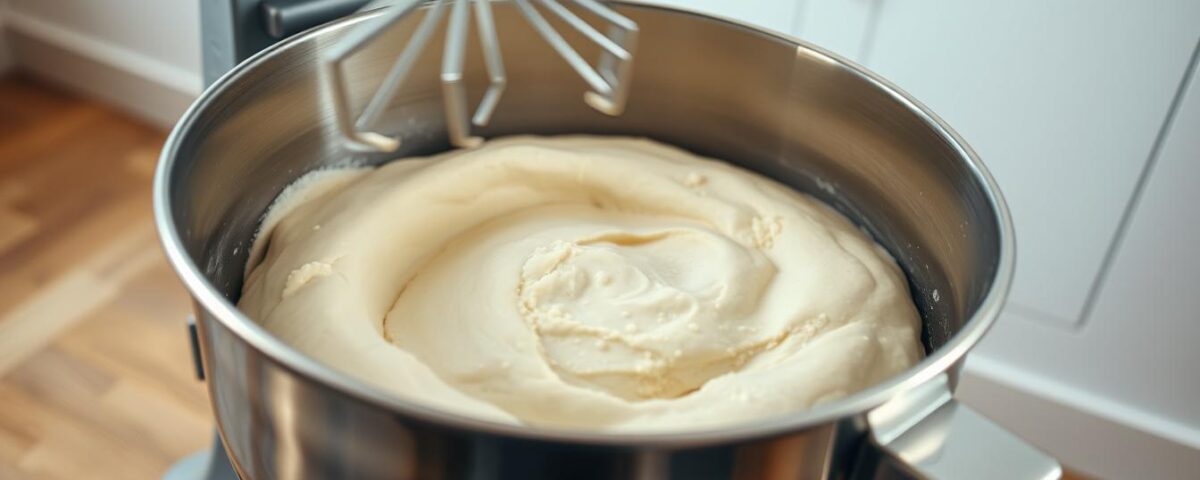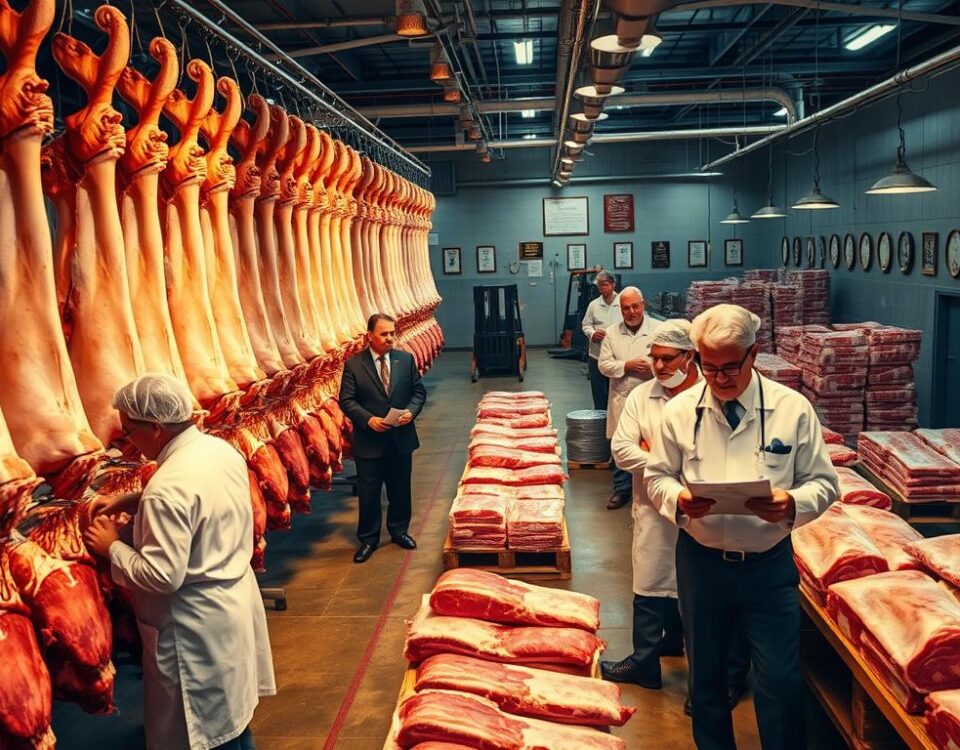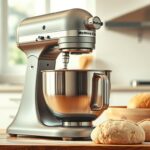
Best Dough Mixers for Pizza vs Bread: How to Choose
September 6, 2025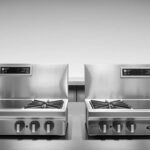
Quick Comparison Guide: Southbend or Vulcan for Your 2025 Kitchen
September 7, 2025As a seasoned expert in the baking industry, I’ve seen many bakeries struggle with inconsistent bread quality and production inefficiencies due to poor mixer choices. In my experience, the right dough mixing equipment can make all the difference in producing high-quality bread.
Did you know that a wrong mixer can lead to a significant increase in production costs and a decrease in product quality? I’ve identified four critical mistakes that bakers commonly make when selecting between spiral and planetary mixers.
Understanding these mistakes can save you thousands of dollars in equipment costs and prevent the frustration of working with the wrong mixer for your specific dough needs. What are these critical mistakes, and how can you avoid them?
Key Takeaways
- Understand the key differences between spiral and planetary mixers.
- Identify the four critical mistakes bakers make when choosing a mixer.
- Learn how to choose the right mixer for your specific baking requirements.
- Avoid common pitfalls that lead to poor dough development and inconsistent results.
- Make an informed decision about your bakery equipment to save costs and improve product quality.
Understanding the Difference Between Spiral and Planetary Mixers
In the realm of commercial baking, the debate between spiral and planetary mixers is ongoing, with each having its unique advantages. To make an informed decision, it’s essential to understand how these mixers work and their impact on dough quality.
How Spiral Mixers Work
Spiral mixers are designed with a rotating spiral tool that gently kneads the dough, minimizing heat generation and preserving the dough’s natural temperature. This makes them ideal for temperature-sensitive bread doughs.
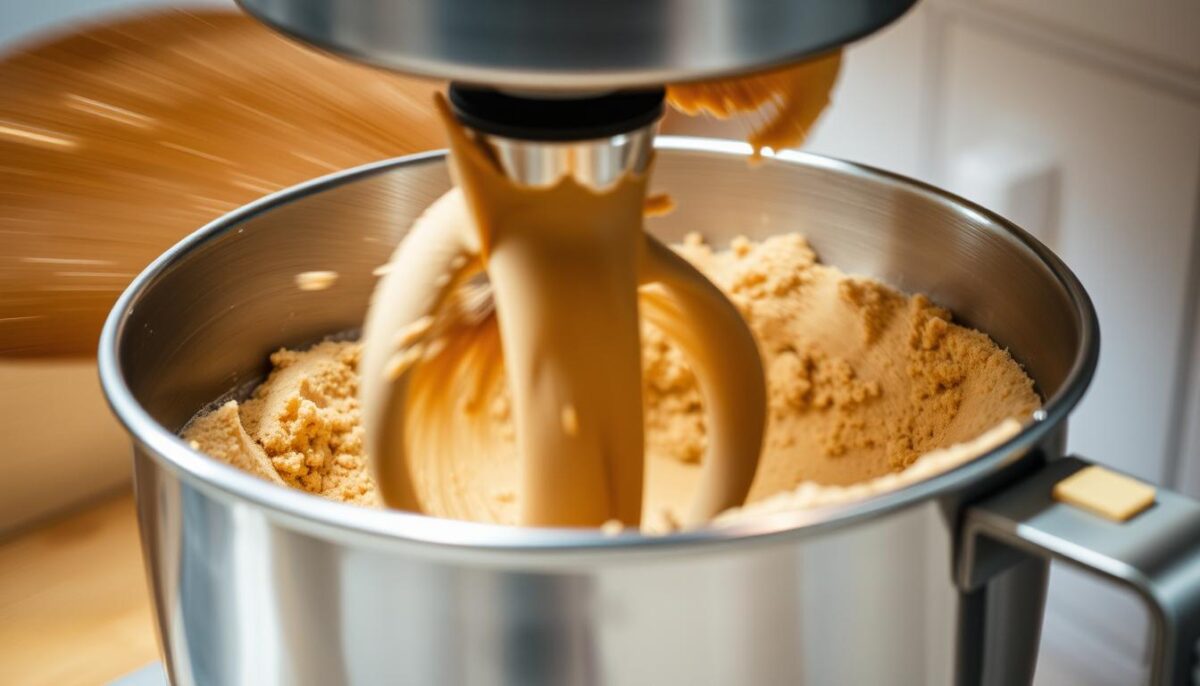
How Planetary Mixers Function
Planetary mixers, on the other hand, feature a rotating agitator that moves in a planetary motion, ensuring thorough mixing and aeration of ingredients. They are known for their versatility and ability to handle diverse mixing tasks.
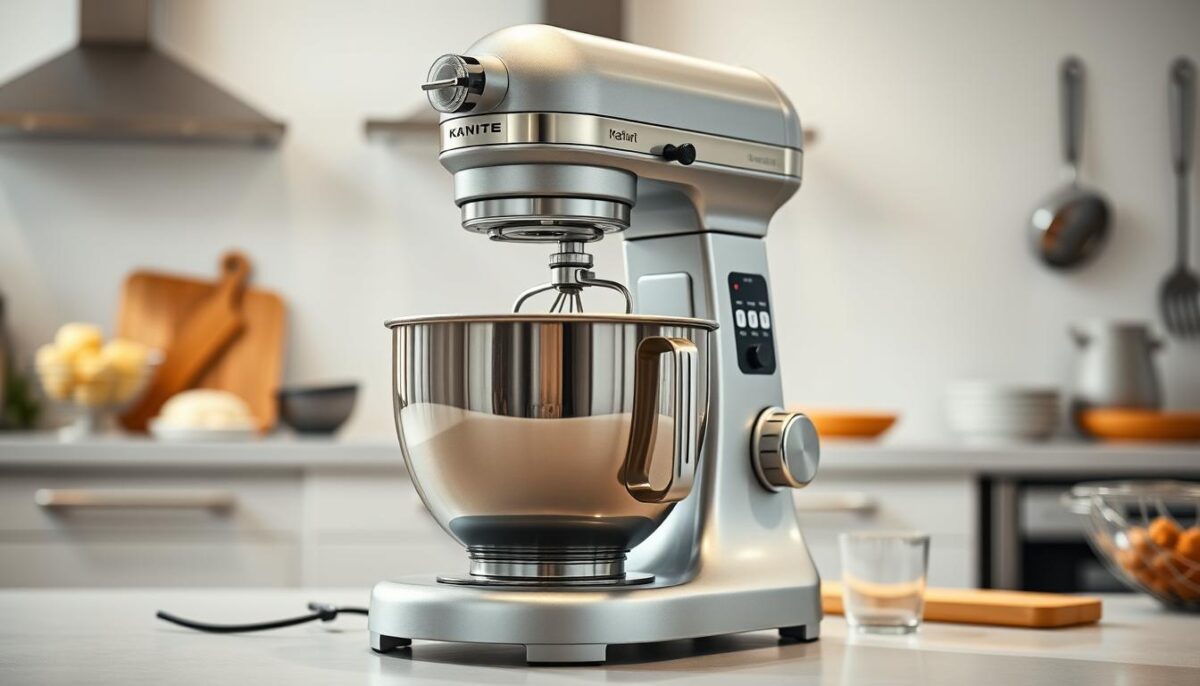
Key Differences in Mixing Action and Results
The mixing action of spiral and planetary mixers differs significantly, affecting the final dough quality. Spiral mixers produce more extensible doughs, while planetary mixers create more elastic, tight doughs. Additionally, spiral mixers handle larger dough batches more efficiently, whereas planetary mixers excel with smaller, diverse batches.
- Spiral Mixers: Produce less heat during operation, ideal for temperature-sensitive doughs.
- Planetary Mixers: Develop dough faster but with more oxidation, resulting in a tighter crumb structure.
- Mixing Time and Speed: Spiral mixers may require longer mixing times, while planetary mixers operate at higher speeds.
- Dough Development: Spiral mixers produce more extensible doughs, while planetary mixers create more elastic doughs.
- Batch Size: Spiral mixers handle larger batches, while planetary mixers are better suited for smaller, diverse batches.
Common Spiral Mixer Mistakes That Affect Dough Quality
In the world of baking, spiral mixers are indispensable, but their performance can be hindered by mistakes that bakers often overlook. Understanding these common errors is crucial for producing high-quality dough consistently.
Selecting the Wrong Mixer Size for Your Production Needs
Choosing the right size of spiral mixer is vital for efficient dough production. A mixer that is too small can lead to overloading, while one that is too large may result in inefficient mixing.
Signs Your Mixer Is Too Small or Too Large
If your mixer is too small, you might notice overloading, excessive wear on the machine, or inconsistent dough quality. On the other hand, a mixer that is too large may lead to underutilization and wasted energy.
How to Calculate the Right Capacity for Your Bakery
To determine the ideal mixer size, consider your typical batch size and the frequency of mixing. A general rule is to ensure that the mixer bowl is filled to about 40-60% capacity for optimal performance.
| Batch Size (kg) | Recommended Mixer Capacity (kg) | Optimal Bowl Fill Percentage |
|---|---|---|
| 10 | 15-20 | 50% |
| 20 | 30-40 | 50% |
| 30 | 45-60 | 50% |
Improper Hydration Techniques
Hydration techniques play a significant role in dough development. Improper hydration can lead to suboptimal gluten development and dough quality.
The Bassinage Method for Better Gluten Development
The bassinage method involves adding water in two stages to improve gluten development. This technique can enhance dough elasticity and strength.
Adjusting Hydration Levels for Different Dough Types
Different types of dough require varying hydration levels. For instance, artisan breads typically require higher hydration than sandwich breads.
Incorrect Mixing Times and Speed Settings
Mixing time and speed are critical factors that influence dough quality. Incorrect settings can result in underdeveloped or overdeveloped dough.
Understanding the 900-1000 Revolution Rule
According to Mr. Hamelman, mixing for around 900-1000 revolutions is recommended, which for some mixers equates to about 10 or 11 minutes at 90 rpm. This guideline helps in achieving optimal dough development.
How to Adjust Mixing Time Based on Dough Observation
Observing the dough during mixing is crucial. Adjust mixing time based on visual and tactile cues, such as the dough’s texture and elasticity, rather than adhering strictly to a timer.
“The key to perfect dough is not just following a recipe, but understanding the nuances of the mixing process.”
By avoiding these common mistakes, bakers can significantly improve the quality of their dough. Whether it’s selecting the right mixer size, employing proper hydration techniques, or adjusting mixing times and speeds, attention to detail is paramount.
Troubleshooting Mechanical Issues with Mixers
Understanding how to address mechanical issues with mixers can save time and resources. Mechanical problems can arise from various factors, including improper maintenance, incorrect usage, and wear and tear on components.
When Your Dough Climbs the Hook
One common issue with mixers is when the dough climbs the hook, which can be caused by incorrect speed settings or improper dough consistency. To address this, it’s essential to understand the prevention techniques and quick fixes.
Prevention Techniques
To prevent dough from climbing the hook, ensure that your mixer is set to the correct speed for the type of dough you’re working with. Additionally, maintaining the right dough consistency is crucial.
Quick Fixes During Mixing
If the dough starts to climb the hook during mixing, stop the mixer and adjust the dough consistency or the mixer’s speed setting. Sometimes, simply stopping and restarting the mixer can resolve the issue.
Dealing with Dough That Won’t Develop Properly
Dough that doesn’t develop properly can be due to mechanical issues or problems with the recipe or technique. Checking for mechanical problems and adjusting your recipe and technique can help resolve this issue.
Checking for Mechanical Problems
Inspect your mixer for any mechanical issues, such as worn-out parts or improper alignment. Ensuring that your mixer is in good working condition is crucial for proper dough development.
Adjusting Your Recipe and Technique
Sometimes, the issue lies not with the mixer but with the recipe or mixing technique. Adjusting the ingredients or the mixing time can help achieve the desired dough development.
Maintenance Tips to Prevent Common Mixer Problems
Regular maintenance is key to preventing many common mixer problems. This includes daily cleaning, monthly checks on critical components, and quarterly maintenance tasks.
Daily Cleaning Procedures
Daily cleaning involves removing any dough or debris from the mixer and its components. This helps prevent the buildup of residue that can affect the mixer’s performance.
Monthly and Quarterly Maintenance Checks
Monthly and quarterly checks involve inspecting critical components such as the reducer, sprocket/chain, shaft, and mechanical seal for wear or damage. Proper lubrication of moving parts is also essential.
| Maintenance Task | Frequency | Description |
|---|---|---|
| Check Reducer Oil | Monthly | Ensure the reducer oil is at the correct level and condition. |
| Inspect Sprocket/Chain | Quarterly | Check for wear or damage and adjust or replace as necessary. |
| Shaft Inspection | Quarterly | Check for deformation or poor dynamic balance. |
| Mechanical Seal Check | Quarterly | Inspect for oil leakage or damage to the sealing ring. |
By following these maintenance tips and troubleshooting techniques, you can minimize downtime and ensure your mixer operates efficiently.
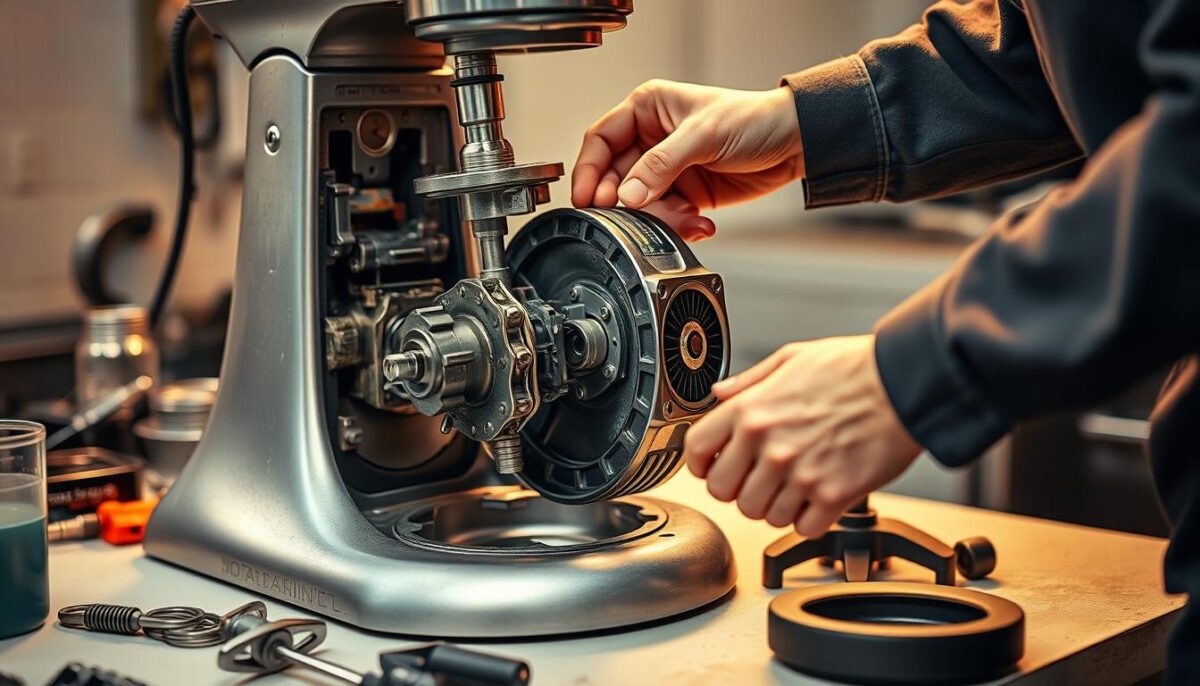
Conclusion: Making the Right Mixer Choice for Your Baking Needs
As we wrap up our exploration of spiral and planetary mixers, it’s clear that understanding your bakery’s specific needs is crucial. I’ve covered the critical differences between these mixers and common mistakes bakers make when selecting and using them.
To make the right mixer choice, consider your typical batch sizes, dough types, and production schedule. Viewing your mixer as a long-term investment in quality and efficiency, rather than just focusing on the initial cost, is essential. The right equipment will pay dividends through consistent product quality and reduced labor.
Even the best mixer requires proper technique, maintenance, and occasional troubleshooting. By avoiding common mistakes, you’ll be well-positioned to select the right mixer for your bakery and achieve high-quality dough development, the foundation of exceptional bread.
Whether you choose a spiral mixer or a planetary mixer, applying the principles discussed will help you maximize its performance. With the right mixer and proper care, you’ll be on your way to resolving any problem that arises and achieving the best possible results in your baking.
FAQ
What is the ideal hydration level for dough mixing?
The ideal hydration level varies depending on the type of bread being made, but generally falls between 60-70% water relative to the weight of the flour. I’ve found that using a digital scale to measure ingredients accurately is crucial for achieving the right hydration level.
How do I know if I’m using the right mixing speed for my dough?
The right mixing speed depends on the type of dough and the mixing machine being used. I recommend starting with a lower speed to combine ingredients, then gradually increasing the speed as the dough comes together. Be careful not to overmix, as this can lead to a dense or tough final product.
What are some common issues with dough that won’t develop properly?
If your dough isn’t developing properly, it could be due to factors such as incorrect temperature, inadequate mixing time, or insufficient kneading. I suggest checking your recipe and mixing technique to ensure you’re providing the right conditions for dough development.
How often should I perform maintenance on my mixing machine?
Regular maintenance is essential to prevent mechanical issues and ensure optimal performance. I recommend cleaning and lubricating your machine after each use, and performing more thorough maintenance tasks, such as checking motor wear, every few months.
Can I use a planetary mixer for making bread dough?
While planetary mixers are versatile and can be used for a variety of tasks, they may not be the best choice for making bread dough, especially for high-volume production. Bread dough requires a specific type of mixing action that spiral mixers are designed to provide.
How do I prevent dough from climbing the hook during mixing?
To prevent dough from climbing the hook, make sure to use the correct hook attachment for your mixer and adjust the mixing speed as needed. I’ve also found that keeping the bowl clean and dry can help prevent dough from sticking to the hook.
